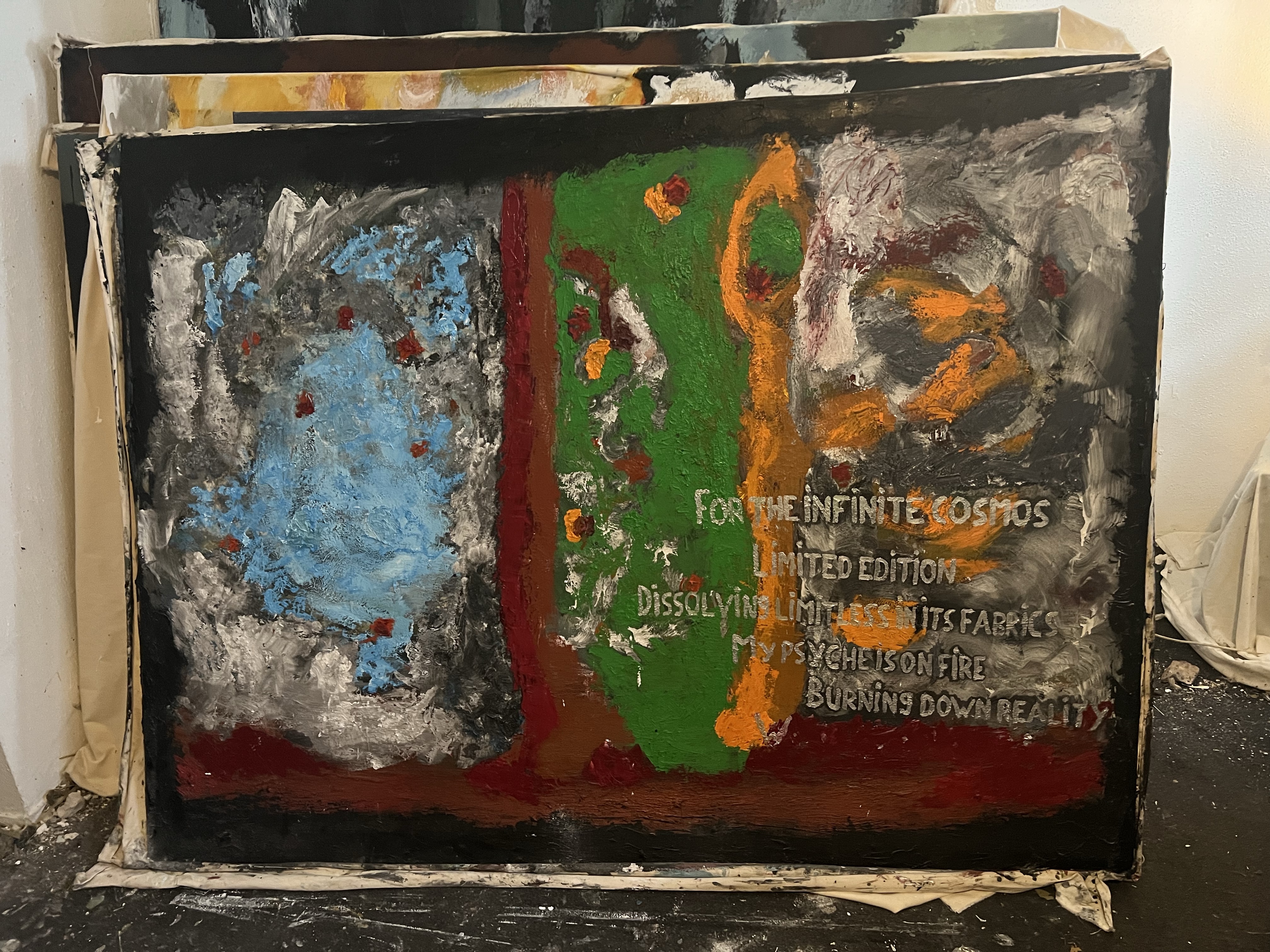Your cart is currently empty!
Mondrian: An artist in search of a deeper reality.

Illustration is a work in progress by Jeroen Verkroost (who wrote this essay)
While Mondrian is primarily seen as an abstract artist, he aimed to depict the reality, emphasizing the universal essence hidden behind sensory phenomena. Viewing human history as an evolution of universal laws influenced by the absolute spirit, he believed in a deeper reality’s incomprehensible force shaping society towards rationality and harmony.
In Mondrian’s 1912 “Blooming Apple Tree,” nature’s forms merge into a dynamic interplay of waves, foreshadowing the underlying unity of reality. He envisioned the imminent spiritualization of contemporary culture, anticipating humanity’s shift toward perceiving the world’s unity beyond apparent distinctions.
Mondrian sought to destroy and reconstruct natural forms to represent the pure reality. His abstract language, as seen in “Composition 10” (1914), symbolized humanity’s liberation from nature’s grasp, progressing towards spiritualization. The interplay of horizontal and vertical lines in his compositions represented a balance between the natural and the spiritual.
By using only black and white in “Composition with Large Red Plane, Yellow, Black, Grey, and Blue” (1921), Mondrian emphasized the fundamental elements of reality through abstraction. His later works showcased equalized elements, highlighting the interconnectedness of diverse phenomena.
Mondrian’s dyslexia fueled his interest in words’ literal meanings. He explored contrasts, seeing hidden unity in apparent oppositions. Tackling concepts like material vs. spiritual and universal vs. temporal, he aimed to make the invisible unity underlying visible nature palpable.
The artist recognized harmony in nature’s contrasting features, asserting that existence is expressed or known through its opposite. Through the dialectical principle, he used contrasting colors and forms to reveal the underlying unity of the seemingly chaotic reality.
Mondrian’s art, an expression of the universal and an exploration of balance between universal and individual, inner and outer, demonstrated a conscious use of dialectics. By harmonizing primary colors, seemingly in disharmony, he revealed the underlying unity in the diverse and seemingly disjointed reality. “To create unity, art must not start from how nature appears but from what it truly is.”
Jan Bor; Mondrian Philosopher
Susanne Deicher; Mondrian
Léon Hanssen; Only a Miracle Can Bear You. On the Sublime in Mondrian.
Léon Hanssen; The Creation of an Earthly Paradise
Hans Janssen; Piet Mondrian. A New Art for an Unprecedented Life
Hans Locher; Piet Mondrian. Color, Structure, and Symbolism
https://www.pietmondrian.info/mondrian-at-a-glance/mondrian-at-a-glance.html